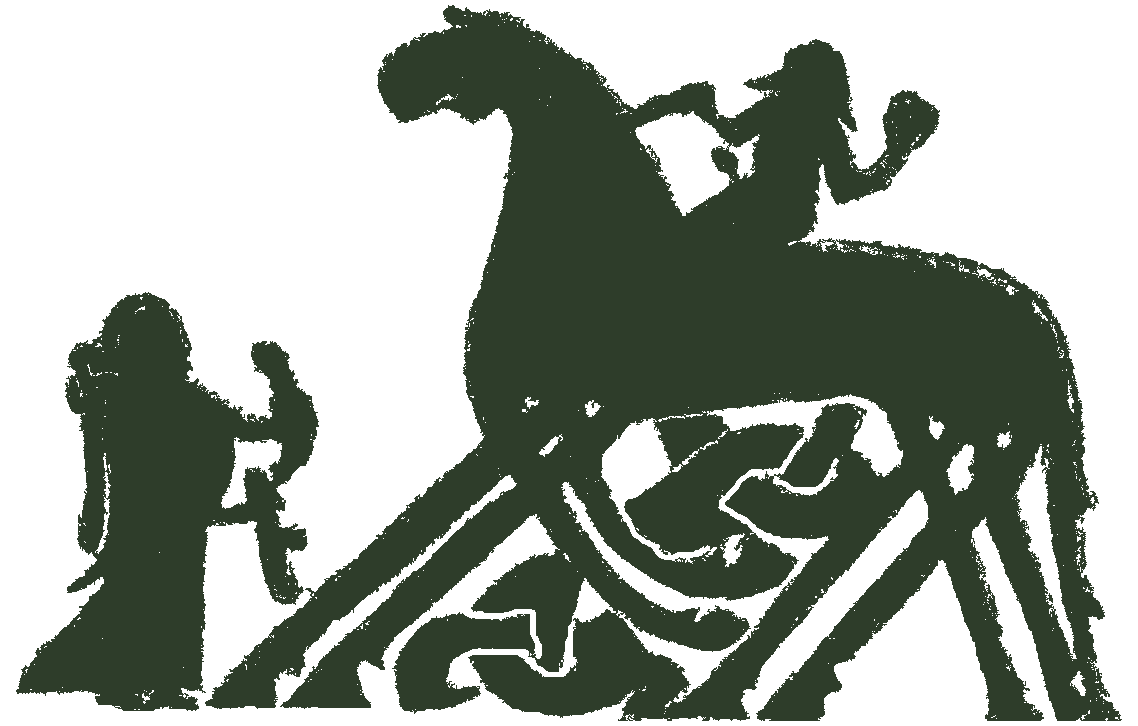Þorleifr jarlsskáld Rauðfeldarson
description
Þorleifr jarlsskáld ‘Jarl’s poet’ (Þjsk), son of Ásgeirr rauðfeldr ‘Red-cloak’, was born at Brekka in Svarfaðardalur in northern Iceland in the mid to late tenth century, and must have been alive c. 970-c. 995. It is impossible to be more definite about his dates as neither Svarfdœla saga nor Þorleifs þáttr jarlaskálds (ÞorlJ) in Flat, the only narrative sources, has a consistent chronology (ÍF 9, xcii, xcvii). Many sources mention Þorleifr as a skald: Ldn (ÍF 1, 254), both versions of Skáldatal (SnE 1848-87, III, 256, 266), Sneglu-Halla þáttr (ÍF 9, 285-6), ÓTOdd (ÍF 25, 191), and HaukrV Ísldr 18IV. Some stanzas are attributed to Þorleifr in Hkr, ÓT, TGT and FoGT, but the bulk of the poetry attributed to him and almost all the biographical information about him is preserved only in ÞorlJ (ÍF 9, 312-29).
According to ÞorlJ, Þorleifr flees Iceland for Norway as a young man, but soon leaves for Denmark after a dispute over trading rights ends with Hákon jarl Sigurðarson burning his ship and executing his crew (Lv 5). He is said to have composed a forty-stanza encomium for King Sveinn tjúguskegg ‘Fork-beard’ of Denmark (Drápa about Sveinn tjúguskegg; Sveindr), but only the stef ‘refrain’ is extant. While staying with Sveinn, he visits Norway and gets his revenge on Hákon by performing a níð poem (Jarlsníð; Jarl) which causes the jarl’s hair to fall out; one stanza is cited in ÞorlJ. After this Sveinn gives Þorleifr his byname, jarlaskáld ‘Jarls’ poet’ and speaks a stanza about the níð (Svtjúg Lv). However, the þáttr’s use of the genitive plural jarla ‘of jarls’ may be incorrect, for TGT calls him jarlsskáld ‘Jarl’s poet’, Skáldatal lists him as a skald of Hákon but not Eiríkr (and the U version calls him ‘Hákonarskáld’), and Þorleifr is not known to have composed poetry about any other jarl (Konráð Gíslason and Eiríkur Jónsson 1875-89, II, 283-4; ÍF 9, xcvii n. 1; see Almqvist 1965-74, I, 197 for a contrary view). The names of poet and þáttr therefore appear with alternation of jarls- and jarla- in printed sources, and the present edition uses jarls- for the poet and jarla- for the þáttr. Þorleifr subsequently returns to Iceland and settles at Höfðabrekka in Myrdalur in the south of the country. He is, according to ÞorlJ, assassinated at the Alþingi by an enchanted wooden golem, a trémaðr with a man’s heart which Hákon has created with the help of his tutelary goddesses, Þorgerðr Hǫlgabrúðr and Irpa (cf. Lv 6). Þorleifr’s burial mound at Þingvellir is said to have still been visible at the time the þáttr was composed, probably in the late thirteenth or early fourteenth century (Harris 1993, 672). Much of this narrative is clearly fictional, and there is reason to suspect the genuineness of most of the stanzas attributed to Þorleifr in ÞorlJ (see Notes to Sveindr and Lv 5 and 6). However, widespread references in reliable sources put Þorleifr’s activity as a skald, his association with Hákon, and his composition of níð about the jarl beyond doubt.
